| HOME |
|---|
AQUARIUS
The Water Bearer
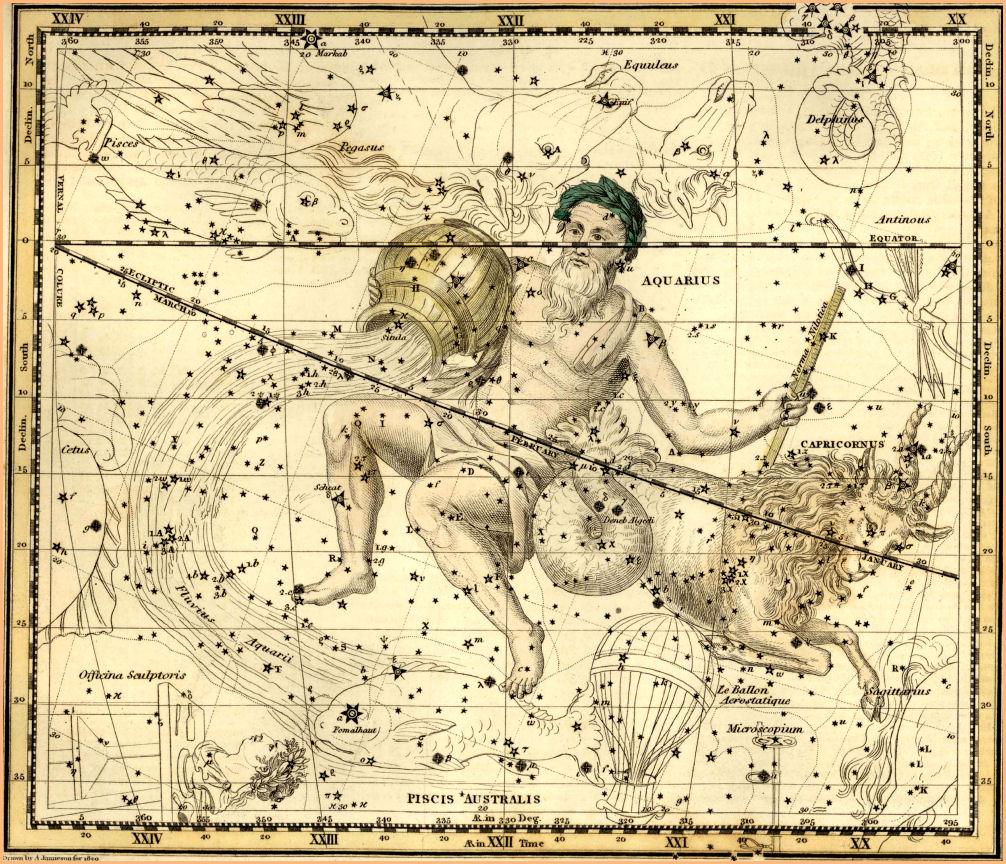
Aquarius - Celestial Atlas by Alexander Jamieson - 1822
| HOME |
|---|

Aquarius, the water bearer, is one of the most ancient of all the constellations, found on Babylonian star charts dating back to 1000 BC. To the Babylonians he was the great god Ea, with the life giving waters of the Tigris and Euphrates flowing over his shoulders. To the Egyptians, he was the god Hapi, pouring water into the Nile and instigating the annual flood that nourished their crops. In the Jamieson depiction above, he holds the Norma Nilotica in his hand to measure the flood level of the Nile.
It was the Greeks, once again, who came up with the definitive Aquarius from the story of Ganymede, a prince of Troy, in the land of Phrygia (now Turkey), depicted in the art of Bode, below. Ganymede was said to be a boy of exceeding beauty, whom the king of the gods, Jupiter (Zeus) became infatuated with. He sent his eagle (Aquila) to snatch the lad and bring him to Olympus, where he became the personal cup-bearer of Jupiter. Historian Robert Graves suggests that in ancient Greece and Rome it was taken as an endorsement of homosexuality. In Latin, Ganymede becomes Catamitus, the root of catamite - a boy or youth in a homosexual relationship with a man.
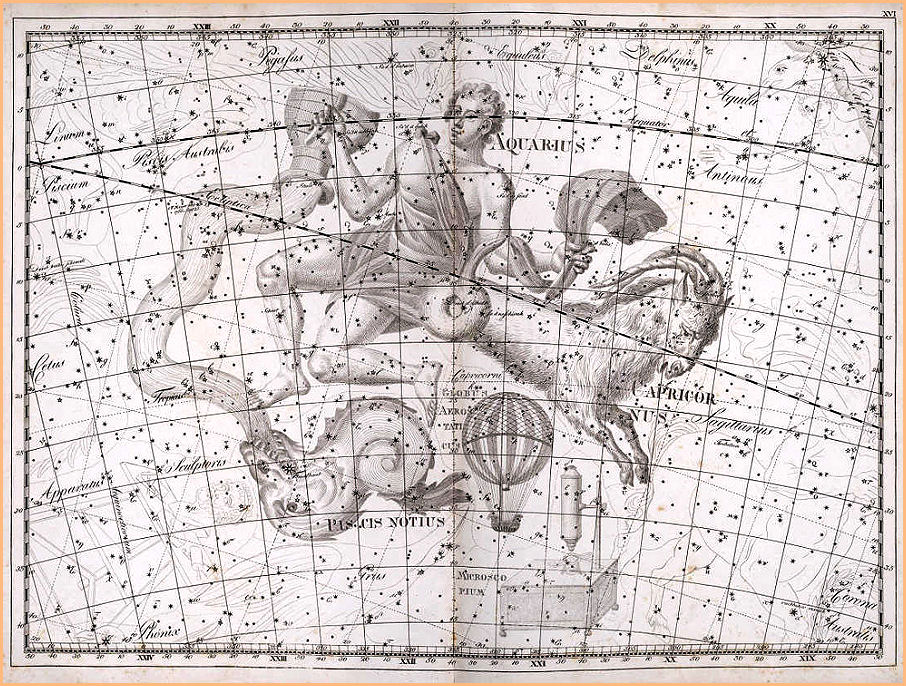
Whether the figure is a boy or a god, the main feature of the constellation is the cascade of water flowing down the sky from the water jar into the mouth of Piscis Australis, the southern fish, symbolizing the life giving gift of water from the heavens.
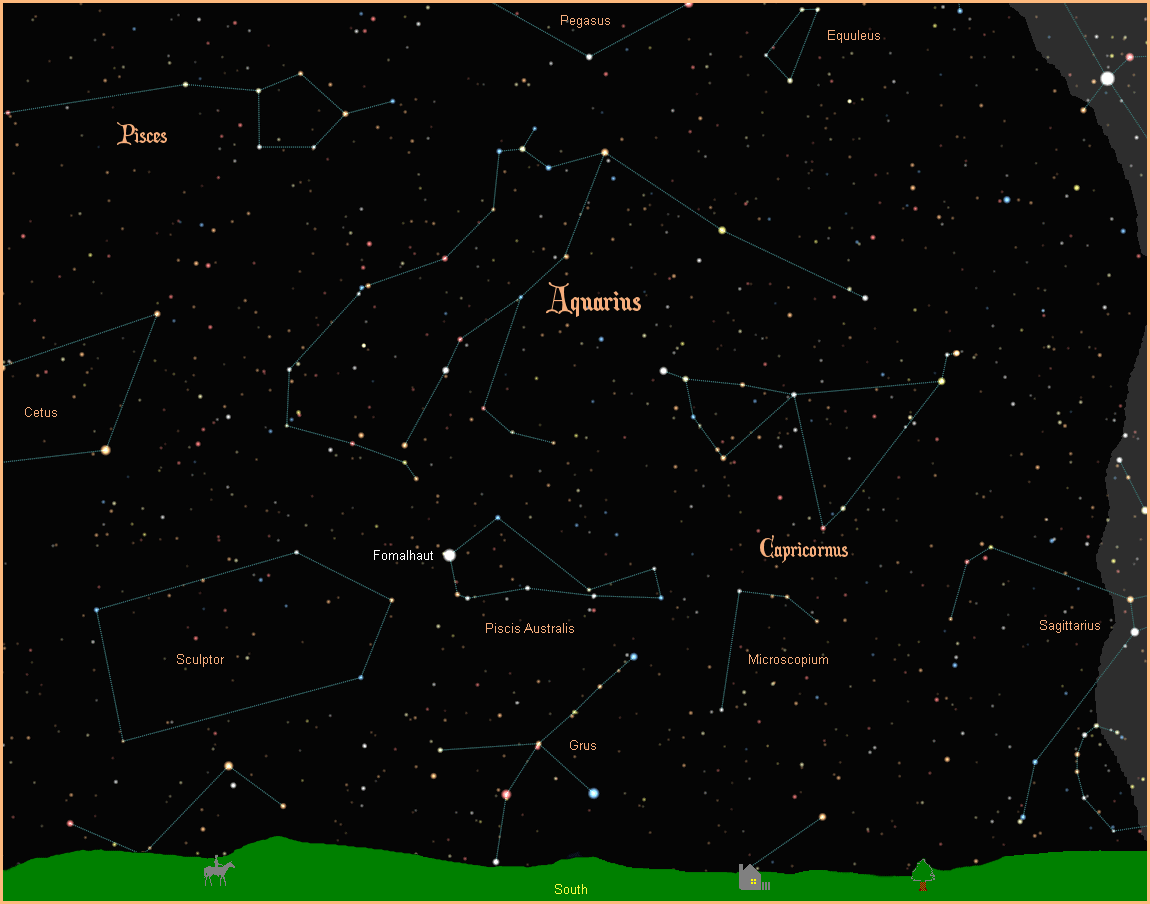
Alpha Aquarii is the brightest star in Aquarius and represents the right shoulder of the figure. It is named Sadalmelik, from the Arabic for lucky star of the king. It is classified as a G2I yellow supergiant, with a magnitude of 2.9, about 500 light years away.
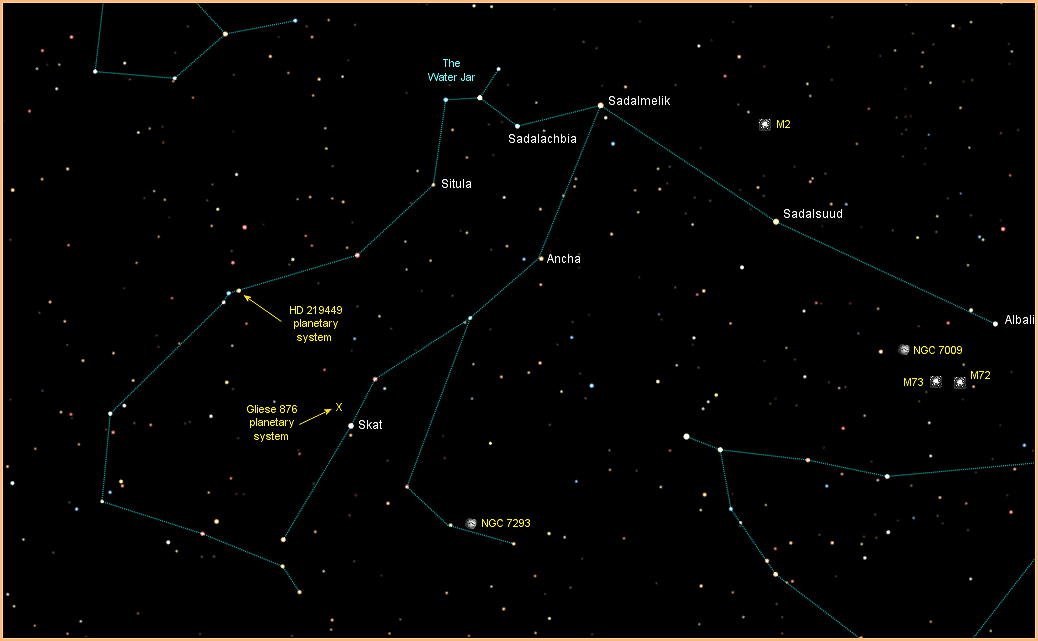
Beta Aquarii is Sadalsuud, meaning luckiest of the lucky. It is a G0I yellow supergiant, magnitude 2.95, about 540 light years away.
Gamma Aquarii is much closer, at a distance of about 160 light years. It has the name Sadalachbia, from the Arabic for lucky star of the tents. It is an A0V white main sequence star that many observers report has a slightly greenish hue. It has a magnitude of 3.8.
Delta Aquarii is Skat, from the Arabic for shin bone. It is an A3V white main sequence star, 160 light years away with a magnitude of 3.3.
Over in the far western corner of the constellation at magnitude 3.7 is Epsilon Aquarii, named Albali. According to R. H. Allen the name is derived from the Arabic Al Sa'd al Bula, and translated as the good fortune of the swallower, which even he infers makes little sense. Possibly it's an homage to the original Babylonian figure of Ea, The Great One, who had a large swallow flying over him, under whose tail the water flowed. Albali is an A1V white main sequence star, 200 light years away.
Theta Aquarii is Ancha, Latin for the hip. classified as a G8III yellow giant, it has a magnitude of 4.2, and is about 190 light years away.
The last named star is Kappa Aquarii, known as Situla, Latin for water jar, and it marks the opening of the container from which the water flows. It is a K2III orange giant with an eighth magnitude companion, making it a binary system. It is about 230 light years away with a magnitude of 5.04.
As of 2016, there have been thirteen planetary systems discovered in Aquarius. One of these involves a star that is visible to the naked eye, halfway down the stream of water cascading from the Water Jar. The star is HD 219449 (91 Aqr), a K0III orange giant, about 146 light years away, with a magnitude of 4.21. The planet orbiting this star is a massive gas giant, with the mass of three Jupiters, and unlikely to support life, although it certainly may have moons that do so.
One of the more exciting planetary systems lies next to the right shin of the water bearer. Unfortunately the star, Gliese 876, only has a magnitude of 10.17, putting it well beyond naked eye visibility. But find the star with a small telescope and you will be looking at a sun supporting no less than four planets. Three of these planets are smaller than Jupiter, and one of them, planet Gliese 876d, is only 7.5 times larger than Earth. Best of all, the system is only 15 light years away, one of our closest neighbors, making this a star to keep your eye on.
In May, 2016, scientists using the TRAPPIST (Transiting Planets and Planetesimals Small Telescope) telescope at the European Southern Observatory in Chile found no less than 3 Earth-like planets in the habitable zone around a small red dwarf star designated TRAPPIST 1 (2MASS J23062928-0502285). At a distance of 40 light years, and not much larger than the planet Jupiter, the star is visible only in very large telescopes, but the three planets orbiting the star are being hailed as some of the best candidates discovered so far for supporting life as we know it. For more information on these and other extrasolar planets, visit NASA's New Worlds Atlas, and The Open Exoplanets Catalogue.
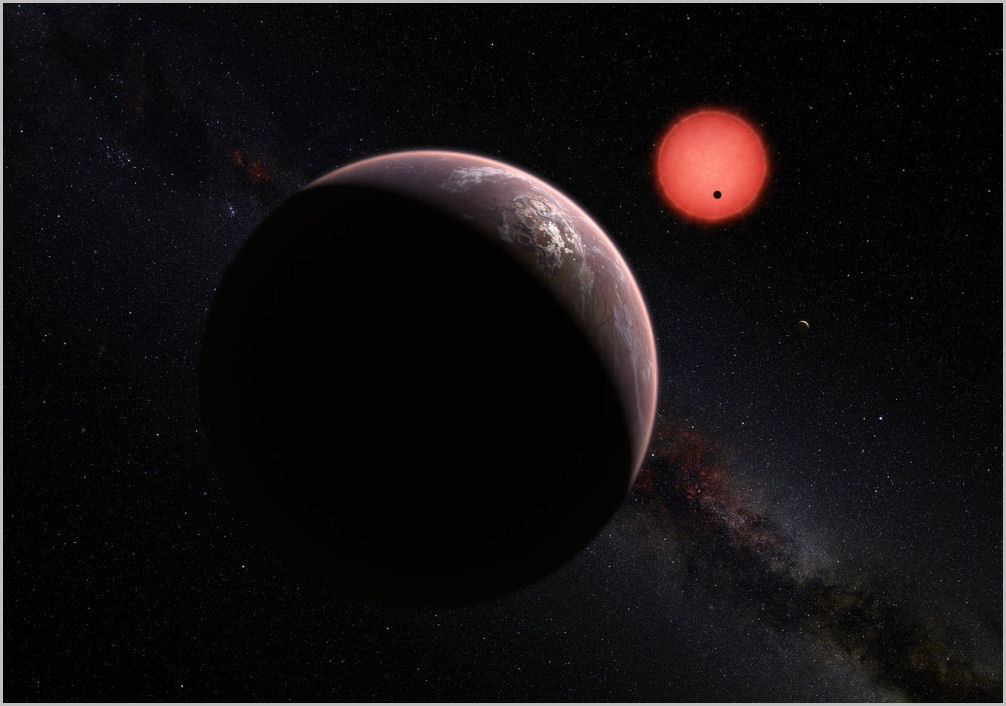
Aquarius contains one of the largest globular clusters in the sky, M2 (NGC 7089), the second entry in the famous Messier Catalog compiled by Charles Messier in 1781. At magnitude 6.3 it is on the very edge of naked eye visibility, and easily identified in a small telescope. It is 33,000 light years away, 175 light years across, and estimated to contain about 150,000 stars.
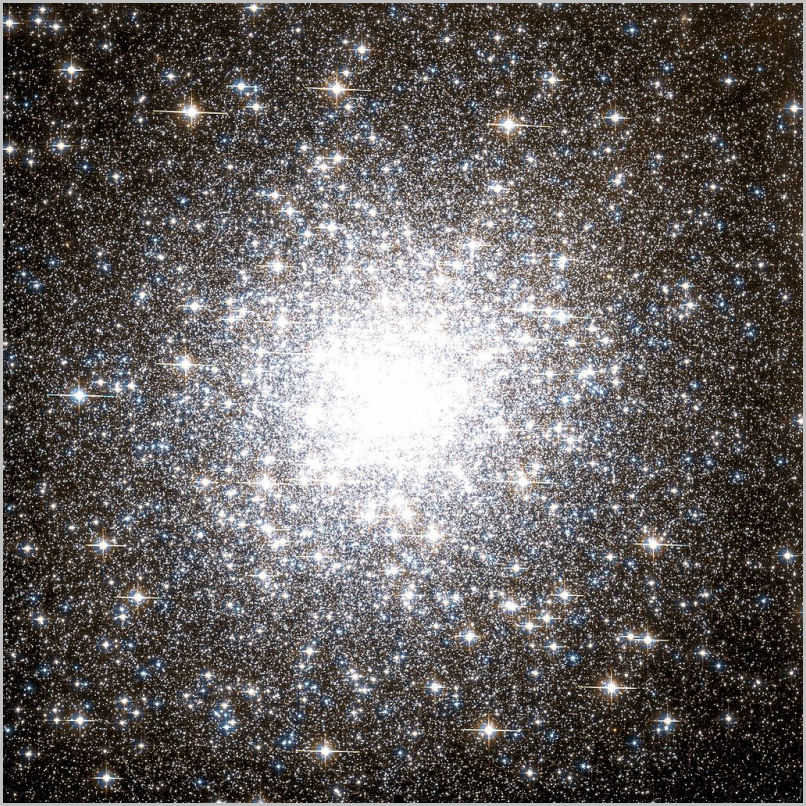
M72 (NGC 6981), is a much smaller, fainter, more sparsely populated globular cluster, about 53,000 light years from Earth. At magnitude 9.35, you will need a small telescope just to find it, and a large scope like Hubble to see its true splendor.
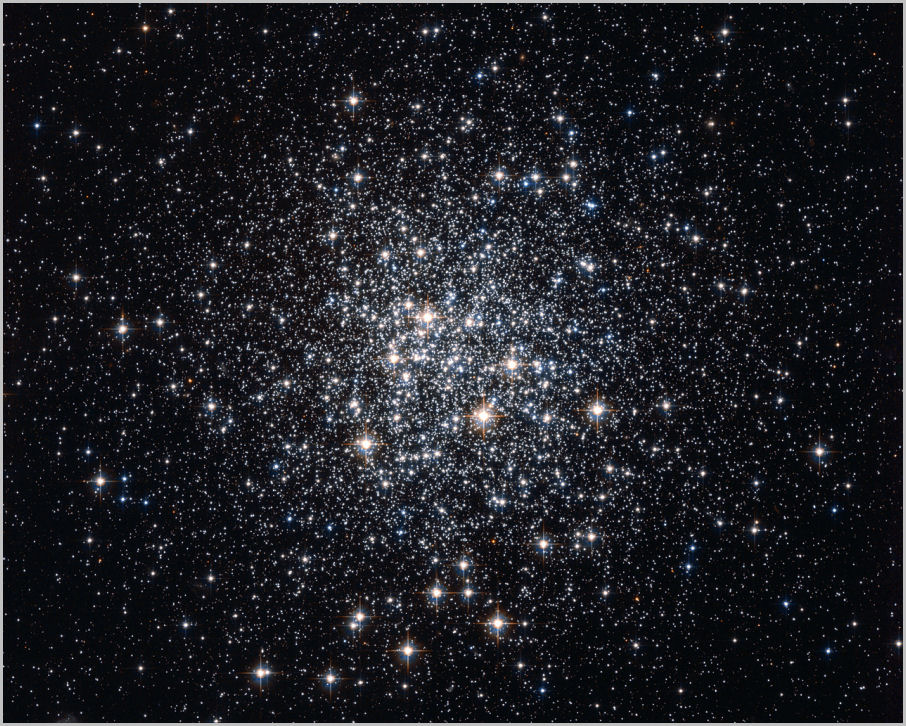
The Messier object M73 is an unimpressive little group of four stars. It is not known if they are physically connected, or simply visually connected in the same line of sight.
NGC 7009 is known as the Saturn Nebula, because of two lobes of gas that look like the rings of Saturn through a small telescope. It is an expanding cloud of gas from a dying star, with a magnitude of 8.0, about 1,400 light years away.
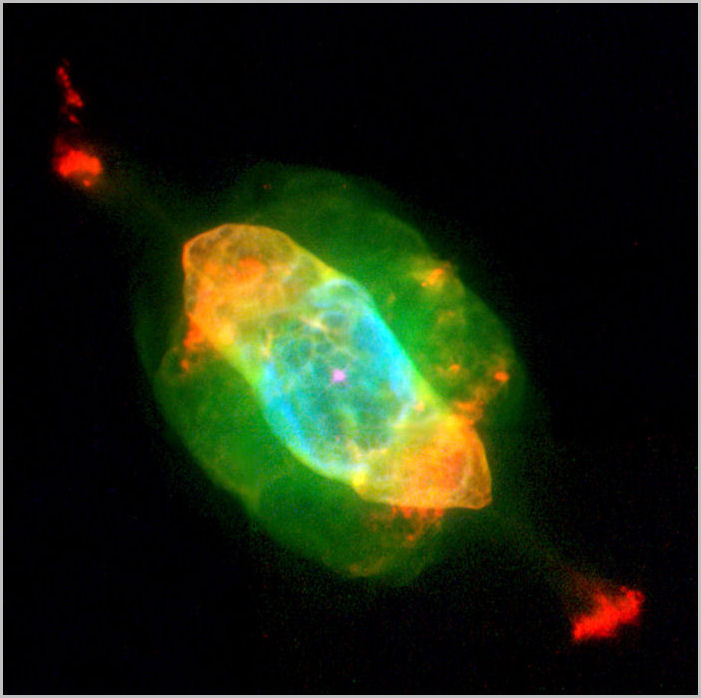
NGC 7293, or the Helix Nebula, is another cloud of gas from a dying star. It is 700 light years away with a magnitude of 6.3.
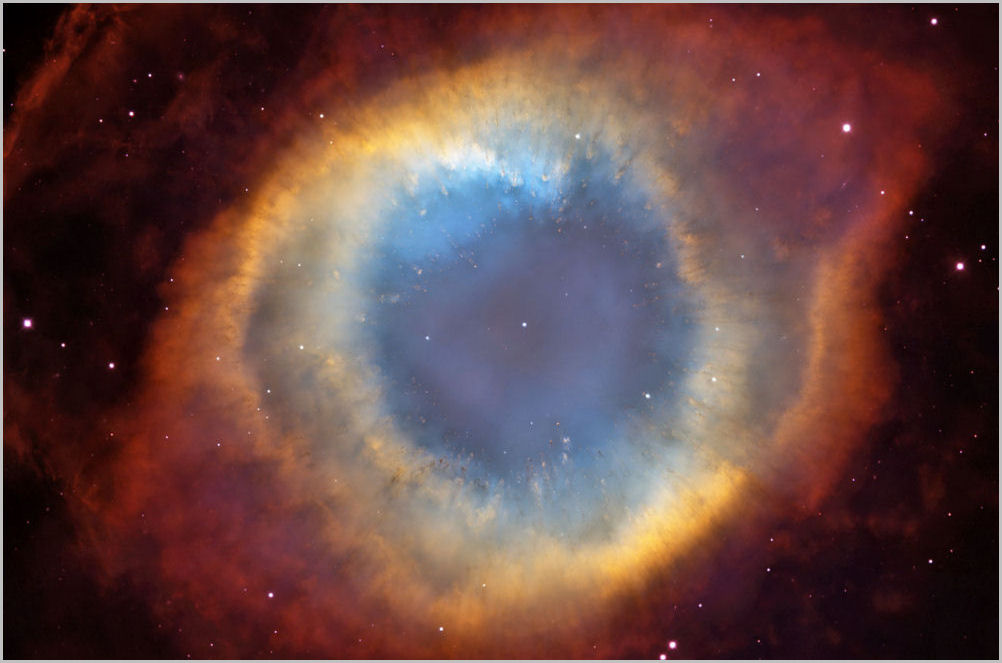
|
|
|
|
|
|